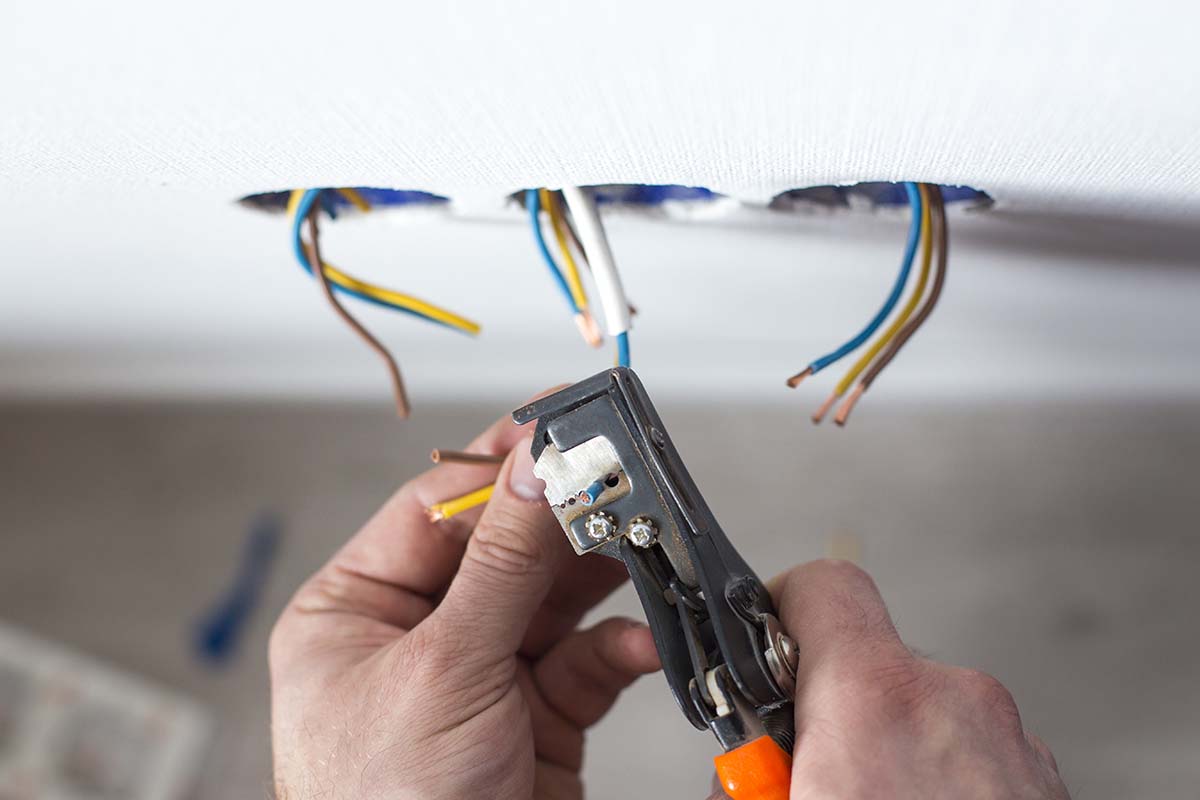Different Home Wiring Types Explained

Home electrical system wiring generally consists of a conducting material, usually a strand of copper or aluminum, and a non-conductive insulating plastic. “Hot” wires are colored red or black to identify which ones not to touch, while white plastic wires are neutral wires. Ground wires are made of copper and often covered in green plastic; since they’re not part of the circuit, they’re safe to touch, although are a fail-safe in case the hot wire fails.
That’s a general overview of home electrical wires. Whether you plan any simple DIY electrical work or plan on becoming a licensed electrician, here is a look at common types of wiring.
Is It a Wire or a Cable?
The words are often used interchangeably. But electrical work, including just looking for issues or troubleshooting the system, requires knowing the difference. A wire is the material that conducts electricity, typically inside the jacket, while a cable combines two or more wires in a single jacket.
Types of Wiring
- Non-Metallic (NM): NM cable, the most common type in modern homes, typically consists of a hot wire, neutral wire, and ground wire inside a plastic sheath. This thermoplastic material is heat resistant and best suited for dry locations. For the most part, NM cables are flat and tubular and run inside walls and under floors. NM cable is color coded as such:
- White: 14-gauge conductors for 15-amp circuits.
- Yellow: 12-gauge conductors for 20-amp circuits.
- Orange: 10-gauge conductors for 30-amp circuits.
- Black: 6- and 8-gauge wire for 55/40-amp circuits respectively.
- Gray: Reserved for underground cable.
- Underground Feeder (UF) Cable: A nonmetallic cable designed to be buried underground. Suited for wet locations, it is often installed to serve outdoor lamps and other fixtures, major circuits, or a detached garage. It has the same three wires as NM cable, but includes a solid plastic sheathing for each individual wire.
- THHN/THWN Wire: “T” stands for thermoplastic and fire resistance, a single “H” indicates the wire resists temperatures up to 167°F, and “HH” means it tolerates heat of up to 194°F. Wires suited for wet locations have a “W” label and “X” means the wire is made of a flame-retardant synthetic polymer. An “N” wire has a nylon coating that makes it oil and gasoline resistant. A THHN wire is thermoplastic high heat-resistant nylon coated and a THWN is a thermoplastic heat- and moisture-resistant nylon coated wire. Both are the most common wires found in homes. When not hidden behind walls, these wires are installed in a rigid or flexible plastic or metal tube called a conduit.
- Metal-Clad: A metal-clad cable has a more durable outer covering. This protects it if installed in basements and other unfinished areas. Such areas pose a greater risk of physical damage; the metal cladding reduces this risk.
- Low-Voltage: Low-voltage wires are generally found in 22 gauge to 12 gauge sizes. They are usually insulated and can have cable sheathing or be combined in twisted pairs. Very small compared to home circuit wiring, they must be used for low-voltage applications such as doorbells, landscape lighting, sprinkler systems, speaker wires, and wiring for most types of thermostats.
- Phone and Data: Landline telephones require a special low-voltage wiring, as do wires for your internet connection. Phone and data cables can have four to eight wires. A Category 5 (Cat 5) cable wraps eight wires into four pairs for efficient phone/data transmission.
Contact Express Electrical Services for Wiring/Re-Wiring Help
We provide electrical wiring services in Southern California. Our licensed Los Angeles electrician has the training, equipment, and tools to address your wiring and re-wiring needs in the safest way possible. Familiar with all types of home wiring, they can upgrade your service panel, install ground fault interrupt circuits, add new wiring for kitchen appliances, and more. Call 323-727-7799 to discuss your project.

Leave A Comment